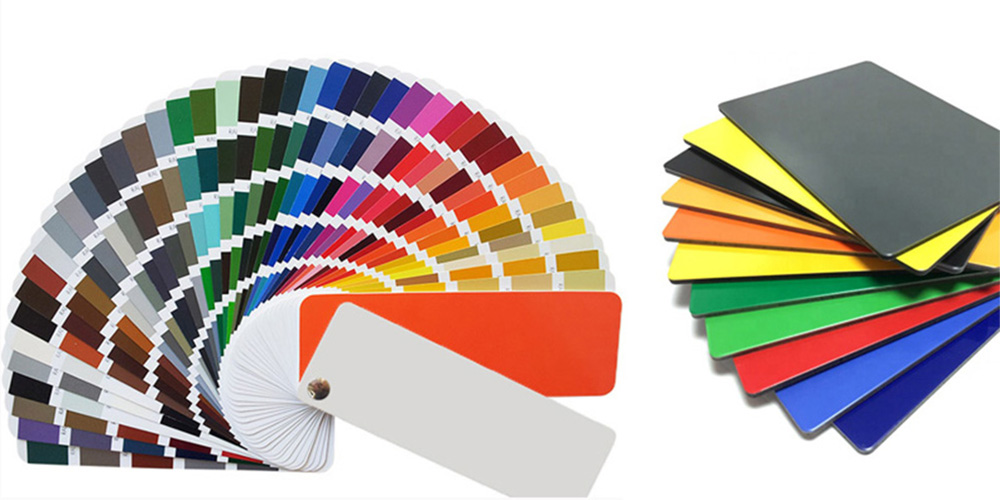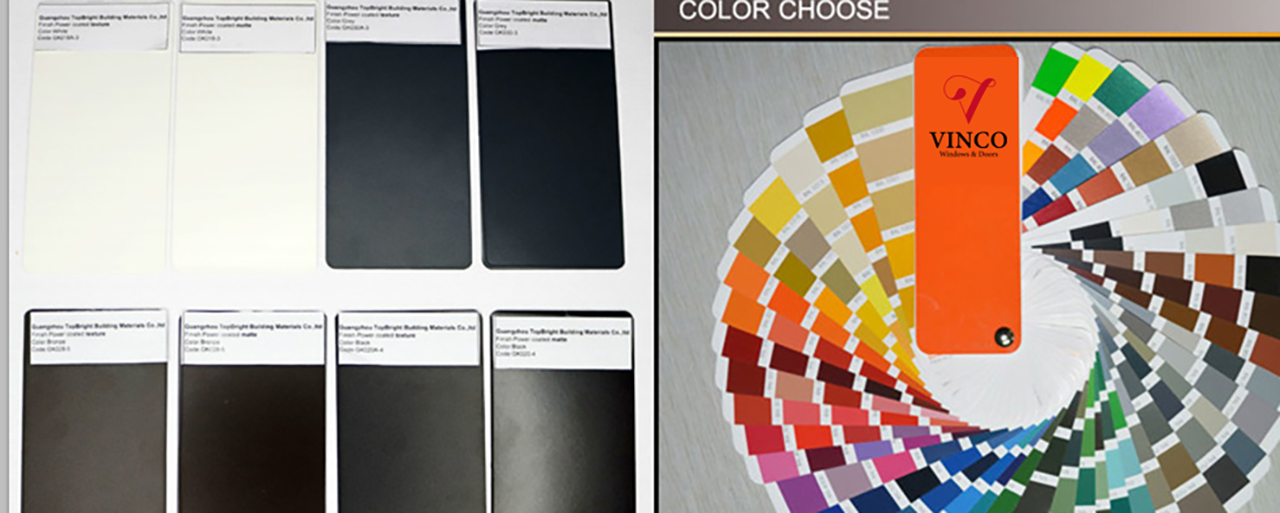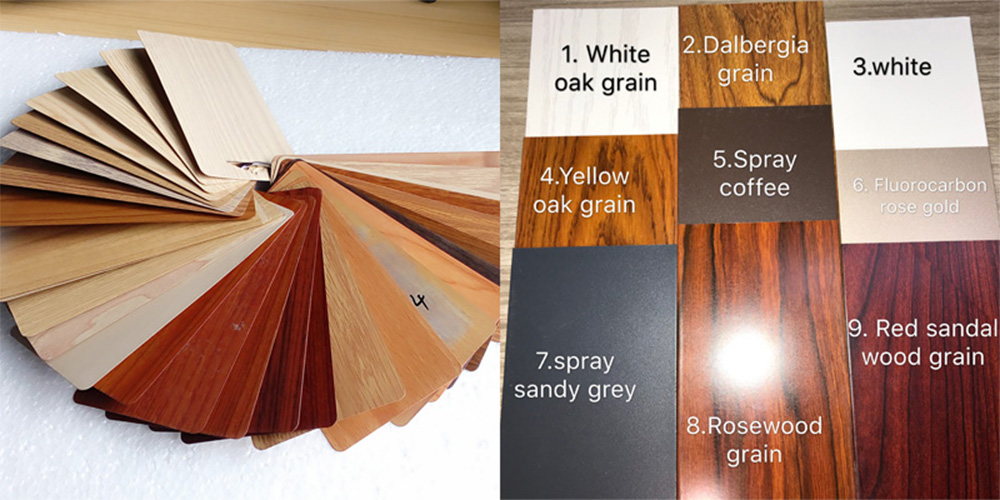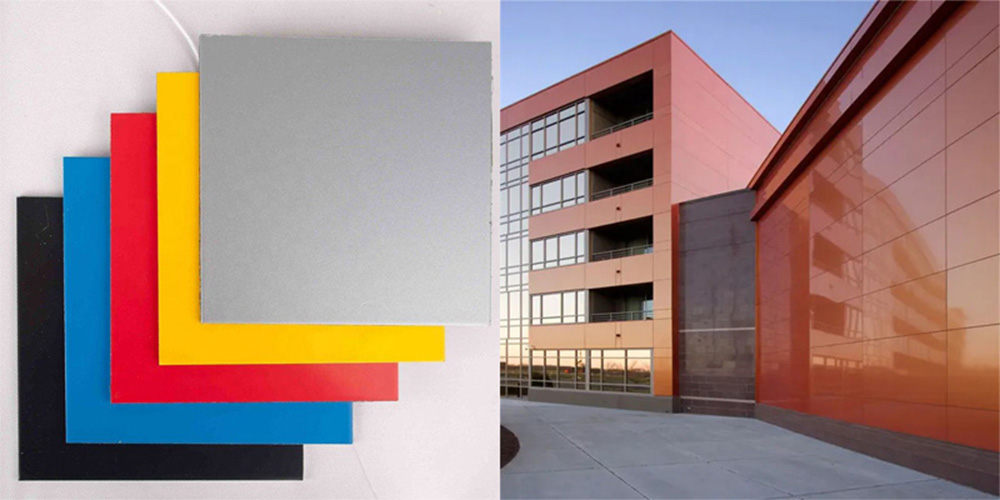To meet the specific requirements of different projects, we provide various surface coating technologies tailored to local climate conditions and market demands. We offer customized surface treatments for all our products, based on client preferences, while also providing professional recommendations.
Anodizing vs. Powder Coating
The following table shows a direct comparison between anodizing and powder coatings as surface finishing processes.
|
Anodizing |
Powder Coating |
|
Can be very thin, meaning only very slight changes to the dimensions of the part. |
Can achieve thick coats, but it is very difficult to obtain a thin layer. |
|
Great variety of metallic colors, with smooth finishes. |
Extraordinary variety in colors and textures can be achieved. |
|
With proper electrolyte recycling, anodizing is very environmentally friendly. |
No solvents are involved in the process, making it very environmentally friendly. |
|
Excellent wear, scratch, and corrosion resistance. |
Good corrosion resistance if the surface is uniform and undamaged. Can wear and scratch more easily than anodizing. |
|
Resistant to color fading as long as the dye selected has suitable UV resistance for the application and is sealed properly. |
Very resistant to color fading, even when exposed to UV light. |
|
Makes the aluminum surface electrically non-conductive. |
Some electrical conductivity in the coating but not as good as bare aluminum. |
|
Can be an expensive process. |
More cost-effective than anodizing. |
Aluminum naturally develops a thin layer of oxide on its surface when exposed to air. This oxide layer is passive, meaning it no longer reacts with the surrounding environment — and it protects the rest of the metal from the elements.

Anodizing
Anodizing is a surface treatment for aluminum parts that takes advantage of this oxide layer by thickening it. Technicians take the aluminum piece, such as an extruded part, submerge it into an electrolytic bath, and run an electric current through it.
By using aluminum as the anode in the circuit, the oxidation process occurs on the surface of the metal. It creates an oxide layer thicker than the naturally occurring one.
Powder coating
Powder coating is another type of finishing process used on a wide variety of metal products. This process results in a protective and decorative layer on the surface of the treated product.
Unlike other coating applications (e.g., painting), powder coating is a dry application process. No solvents are used, making powder coating an environmentally friendly alternative to other finishing treatments.
After cleaning the part, a technician applies the powder with the help of a spray gun. This gun applies a negative electrostatic charge to the powder, which makes it attracted to the grounded metal part. The powder remains attached to the object while it’s cured in an oven, turning the powder coat into a uniform, solid layer.


PVDF coatings
PVDF coatings fit among the fluorocarbon family of plastics, which form bonds that are extremely chemically and thermally stable. This enables some PVDF coating variants to consistently meet or surpass stringent requirements (like AAMA 2605) with minimal fading over long periods of time. You may be wondering how these coatings are applied.
The PVDF Application Process
PVDF coatings for aluminum are applied in a painting booth by a liquid spray coating gun. The following steps outline the full process for completing a high-quality PVDF coating:
- Surface Preparation – Any high-quality coating requires good surface preparation. Good PVDF coating adhesion requires cleaning, degreasing, and deoxidizing (removing rust) the aluminum surface. Superior PVDF coatings then require the application of a chrome-based conversion coating to be applied before the primer.
- Primer – The primer effectively stabilizes and protects the metal surface while improving adhesion for the top coating.
- PVDF Top Coating – Color pigment particles are added along with the application of the top coating. The top coating serves to provide the coating with resistance to damage from sunlight and water, as well as an increase in abrasion resistance. The coating must be cured after this step. The top coating is the thickest layer in the PVDF coating system.
- PVDF Clear Coating – In the 3-layer PVDF coating process, the final layer is the clear coating, which provides additional protection from the environment and allows the color of the topcoat through without exposing it to damage. This coating layer must also be cured.
If required for certain applications, a 2-coat or 4-coat process can be used instead of the 3-coat method described above.
Key Benefits of Using PVDF Coatings
- More environmentally friendly than dip coatings, which contain volatile organic compounds (VOCs)
- Resistant to sunlight
- Resistant to corrosion and chalking
- Resistant to wear and abrasion
- Maintains a high color consistency (resists fading)
- High resistance to chemicals and pollution
- Long-lasting with minimal maintenance
Comparing PVDF and Powder Coatings
The primary differences between PVDF coatings and powder coatings are that PVDF coatings:
- Use a modulated fluid paint, whereas powder coatings use electrostatically applied powders
- Are thinner than powder coatings
- Can potentially be cured at room temperature, while powder coatings must be baked
- Are resistant to sunlight (UV radiation), while powder coatings will fade over time if exposed
- Can only have a matte finish, whereas powder coatings can come in a full range of colors and finishes
- Are more costly than powder coatings, which are cheaper and can save additional cost by reusing over-sprayed powder
Should I Coat Architectural Aluminum With PVDF?
It may depend on your exact applications but if you want highly durable, environmentally resistant, and long-lasting extruded or rolled aluminum products, PVDF coatings may be right for you.


